We sew blouses with lowered and open shoulders
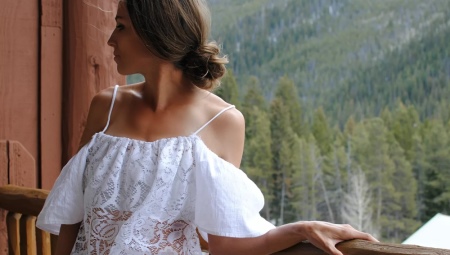
Choosing clothes for the summer heat, I want to take into account not only the factors of practicality and convenience, but also remain feminine and gentle. In order not to lose softness and lightness in the image, you should opt for models of blouses with lowered sleeves and open shoulders, which will emphasize all the sophistication of a woman's nature and will always make you feel comfortable.
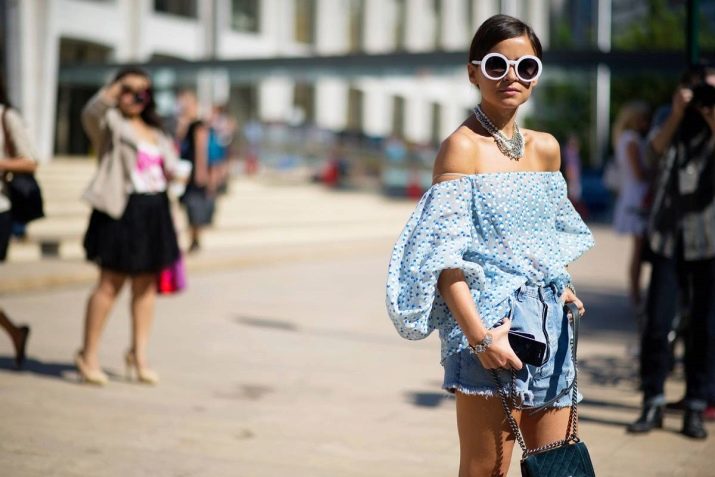
Features and varieties of a deflated shoulder
The main feature of a dropped shoulder is incredible femininity, intertwined with slight sloppiness. The models of the dropped shoulder, which do not open the shoulder completely, gently envelop it, lie down freely, slightly opening the graceful collarbones.
Let's take a closer look at the varieties of blouses with a fully open shoulder, as well as other types that fit under this category:
- A one-piece sleeve can also be classified as a deflated sleeve, which looks especially elegant with a boat neckline, the edges of which end in the shoulder area, due to which the classic sleeve line shifts slightly, slightly exposing the collarbones and shoulder edge. The rest of the neckline options do not change the fact that the sleeve is deflated, but affect the appearance of the product, giving it a more everyday, everyday look - in some cases, and festive, solemn - in others.
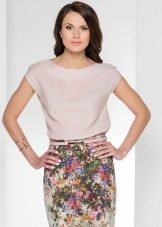
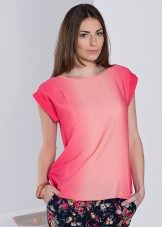

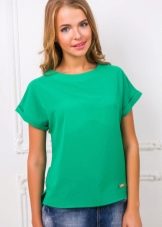
- The classic sewn-on low-cut sleeve is something unusual, since the line of the sleeve begins only from the middle of the shoulder, due to which the blouse also has a slightly offset armhole.

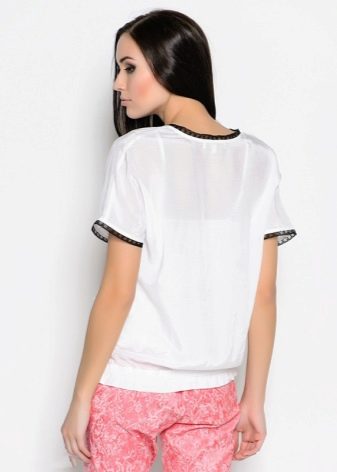
- And the varieties of the deflated sleeve include models with an open shoulder. A striking representative of such products is the peasant blouse, the sleeve of which does not cover the shoulder, but starts only from the middle of the bicep.
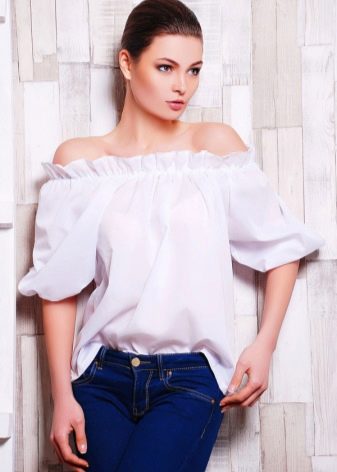
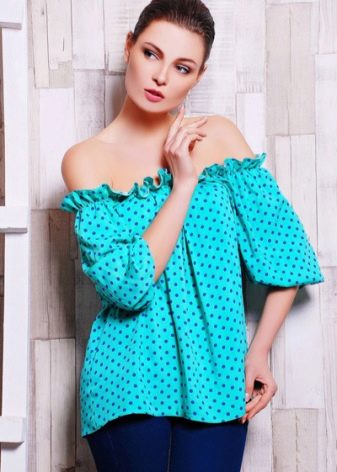
"Peasant" can have like a sleeve of the usual type - long or short, free or tight, or it can be somewhat non-standard - if a sufficiently long flounce is sewn on as a sleeve.
How to simulate?
If you undertake to sew a blouse with low or open shoulders, dream of coming up with something original, but do not know how to make your fantasies come true, you should initially make a standard pattern of the product with a short lowered sleeve.
After you have made all the necessary measurements, you will need to draw the pattern on special paper. You should draw only half of the product for added convenience in further work with it.
We take the details of the pattern-base of the bodice and raglan sleeves and connect them along the line of the armhole.

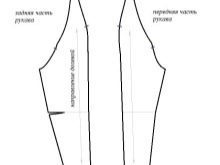
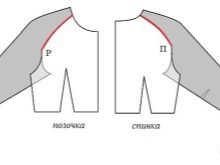
We lower the shoulder line on the front by 5-8 cm, and on the back - 1-1.5 cm more. That is, by 6-9 cm or 6.5-9.5 cm.
Cut out the details along the new lines.
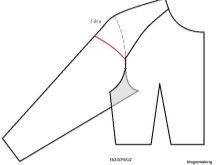
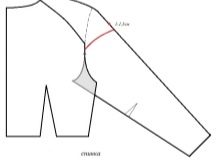
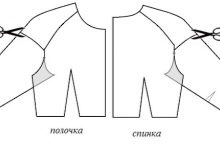
The final version is below.

At your discretion, the groove can be transferred to the pocket.
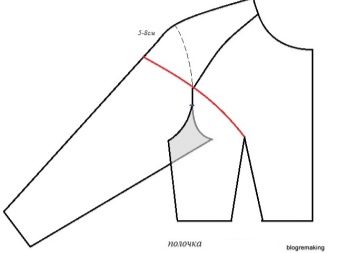
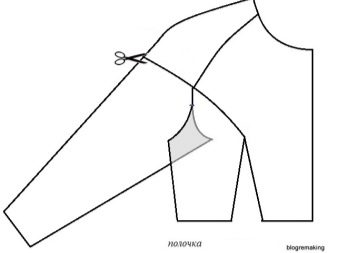

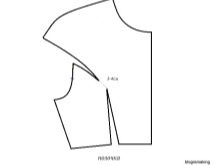

We connect the two halves of the sleeve along the upper cut and align with a smooth line.
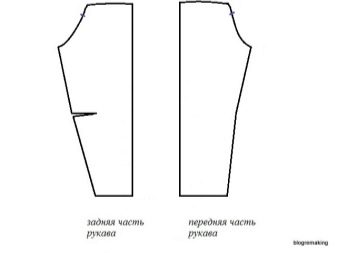
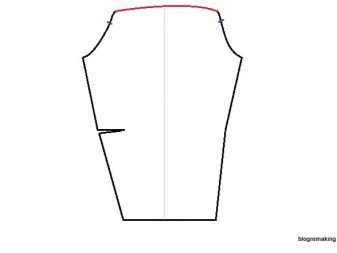
Then the pattern will need to be cut and secured to the fabric, having previously folded the canvas in half. You should know that the inner edge of the pattern should be flush with the fold in the material.

It is then necessary to circle the pattern with a special chalk, then remove the paper part and carefully cut the resulting parts.
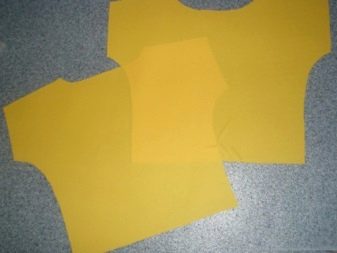

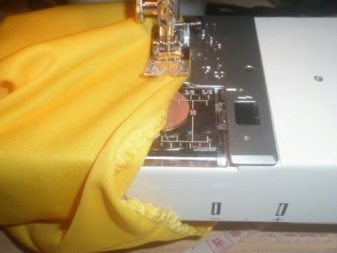

If you just stitch in the fabric details in the right places, you get a stylish but simple blouse with a deflated short sleeve.
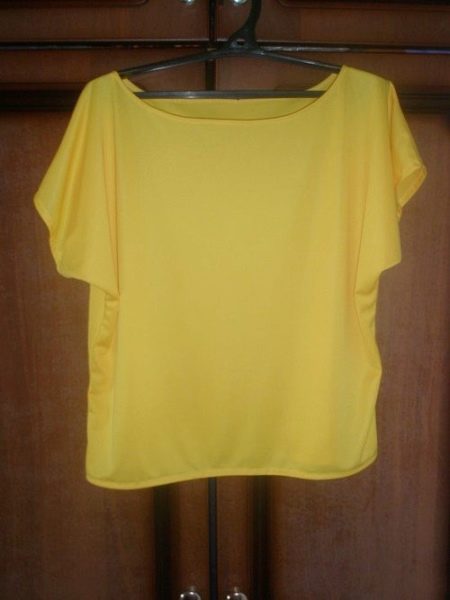
To make the product look more stylish and unusual, you can decorate it with a sewn shuttlecock, which is attached a few centimeters below shoulder level and becomes the highlight of the product.

You can make large cutouts on the shoulders using the following pattern.
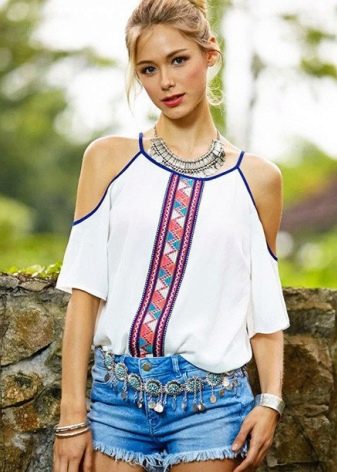
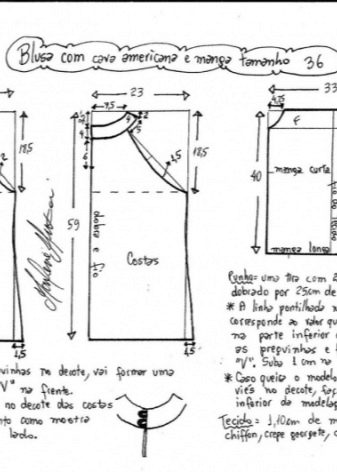
Different options for one pattern
The classic off-shoulder blouse has a fairly simple cut and is made of only two halves. But a simple product can be a little boring, so designers have come up with many ways to decorate products, without changing the pattern.
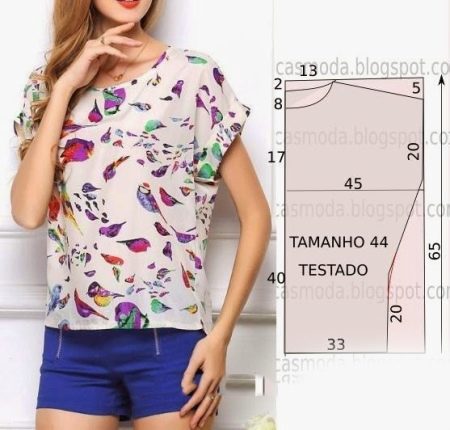
The easiest way to decorate is to create decorative cutouts. Let's consider the most popular options:
- With a cutout on the back - the classic pattern is complemented by a decorative cut in the center of the back, which will need to be processed and the edges will be folded. Looks interesting, stylish and sexy;
- With cutouts on the sides - the model is suitable for those who are not afraid of frankness. From the bottom edge up to the sides, cuts are made to the required length. The edges are folded and processed. The model is suitable for thin girls who are not afraid to expose some parts of their body.
- With a front cutout - a model that will look gorgeous on girls with lush breasts. A simple cut in the neckline can look boring, so it is better to make it in the form of a drop, through which the outlines of seductive volumes are visible;
- With cutouts on the shoulders - the easiest to perform. These can be simple cuts, thanks to which the edges of the sleeve gracefully fall from the shoulders, or there can be a small cut through which the edge of the shoulder is visible.
Thus, you can beautifully decorate the blouse with the slits, creating many variations, but using the base of the same pattern.
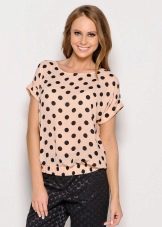
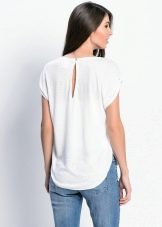

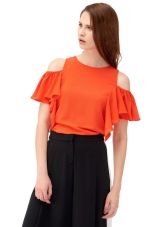
Sewing stages
It's no secret that blouses with or without sleeves, however, like any other product, are sewn in several stages. None of them can be missed, since this can be fraught with serious consequences for the finished product - it will quickly lose its original appearance and become unusable.
So, let's get acquainted in more detail with each stage of sewing a blouse and with their features.
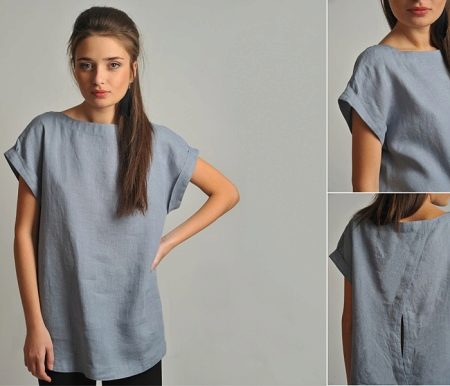
Stage 1 - taking measurements
First of all, you need to take measurements from the person for whom the blouse is being sewn.

The following parameters should be measured:
- Throat circumference - if the product has a high neckline;
- Shoulder width;
- Arm circumference in the bicep area - if the product has a standard sleeve;
- Chest girth;
- Waist girth - may be needed to make a tight-fitting model;
- Hip circumference - if the blouse has an elongated cut.

Stage 2 - building a pattern
Then, you need to make a pattern. If you consider yourself a beginner and have not yet “got your hand” in sewing, it is recommended that you first mark out the details on thin paper designed specifically for sewing patterns.
It is worth paying special attention to the process, not forgetting about the seam allowances.
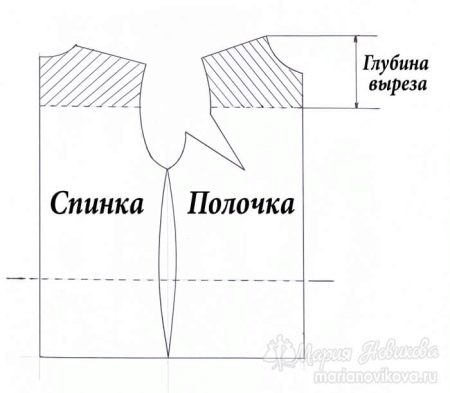
After marking, it is necessary to cut out these parts and, pinning them to the material, circle them with tailor's chalk. Then we cut them out onto the fabric and get the cut out parts of the blouse. The material should be cut carefully, observing the markings exactly, not even creating unnecessary inconvenience when sewing.
Further, it is necessary to process all the edges with an overlog in order to prevent the material from flowing and to prevent the seams from spreading. Some sewing machines have a built-in function, but models that do not have an overcast mode that may well replace the standard overcasting.
After that, we sew the parts together in the necessary places, observing the indents from the edge - about one centimeter. You need to sew carefully, making sure that the seam is even, at medium speed, setting the necessary parameters: stitch size and thread tension.
And finally, the edges of the product should be folded one centimeter in two layers in order to provide the blouse with maximum durability, avoiding the loose edges being tousled. Plus, the folded edges look very neat and beautiful.
How you can sew a blouse with bare shoulders and beautiful ruffles, see the following video:
How to sew a peasant woman with bare shoulders?
The peasant blouse is the embodiment of femininity and lightness, it will be an ideal option for the sultry summer heat, especially if it is made of thin flowing material. This model not only emphasizes the graceful female shoulders and collarbones, but also gives the female figure a more seductive look.
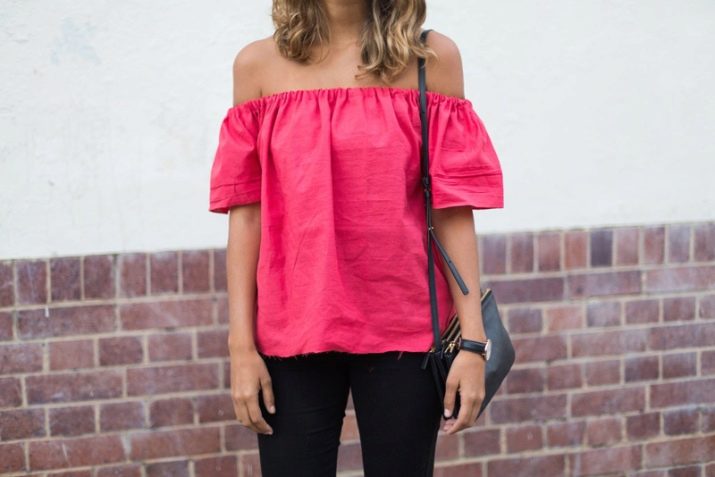
It is noteworthy that this model can be made in several versions: with open shoulders and a flounce, as well as with small sleeves. But, in spite of the difference in patterns, each of the models has an elastic band in the area of the neckline, which allows you to adjust the height of the cutout of the product.
Let's take a closer look at how to cut and sew each of the models, as well as the features of each of the patterns.
Peasant woman with a shuttlecock
It is the easiest to make such a model, since this requires a minimum number of parts, there are no winding lines and folds. Sewing, as well as making patterns, is as simple as possible and does not require much effort.
You only need four parts: the front wall of the blouse, the back wall and two pieces for the shuttle, cut out in the shape of an arc. The details should be cut out, having previously measured the parameters of the figure, but you should not make the blouse too tight and tight, since this model should be light and flowing.

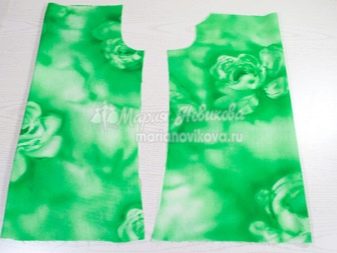
In addition, it is necessary to take into account all the seam allowances, as well as the distance for the rubber vein.
After all the details are marked and cut out, it is necessary to process all the edges. The inner seams must be overfilled, and the outer edge of the shuttlecock must be tightly swept in order to avoid the flow of the fabric. It is best to use the overcasting technique, as the folded shuttlecock can stick out and look not very pretty.
After processing all the edges, sew the front and back walls together, tuck the bottom edge, sew the two parts of the shuttlecock, attach it to the main part of the blouse and insert an elastic band. After the end of sewing, it will be necessary to thoroughly iron the product in order to give it a neater look.
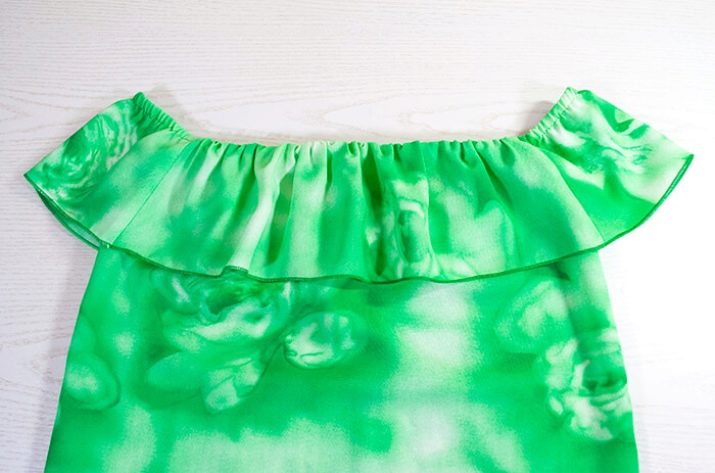
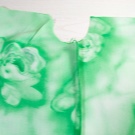

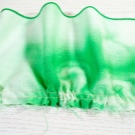
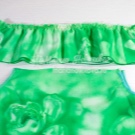
Peasant woman with sleeves
The pattern of the model with sleeves differs only in details: all the same two parts are needed - front and back, but there is no shuttlecock. Instead, the blouse is complemented by small sleeves, which to some extent resemble the "lantern" model.
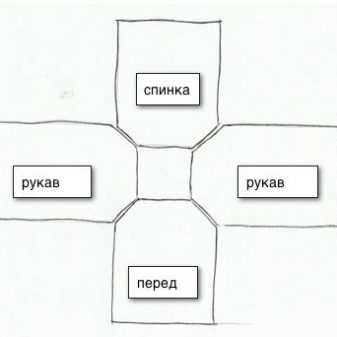

Then we perform all the same manipulations - we process the edges, sew the parts together and insert the elastic bands. The peculiarity of the manufacture of this model is that the elastic bands are inserted not only into the throat hole, but also into the sleeves themselves.
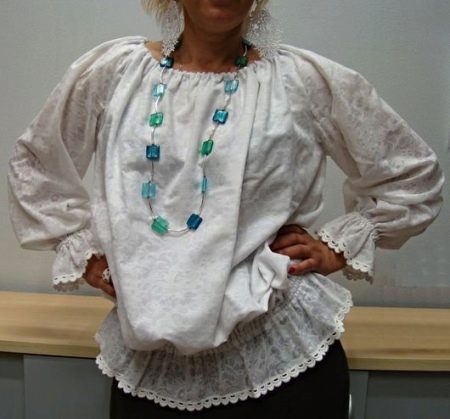
A detailed master class on sewing a blouse with dropped shoulders is described in the following video:








